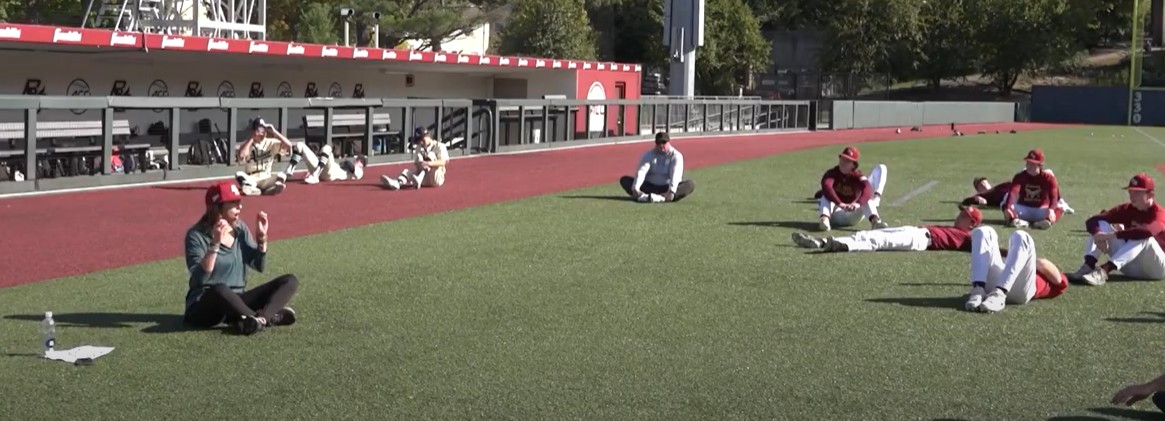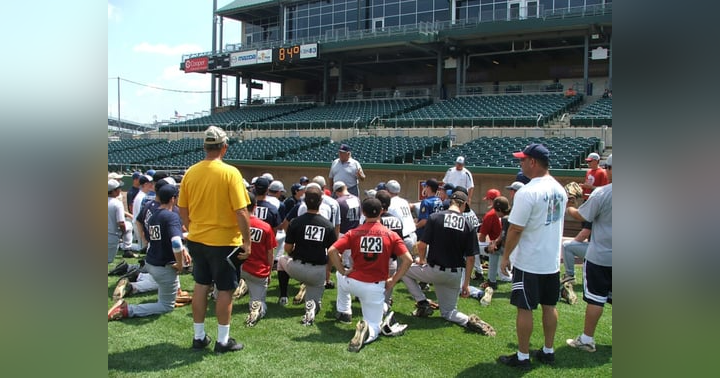Tracy Tanguay Brings Movement Mastery to Clearing The Bases Unlocking Mobility: Small Steps to Big Gains – Lessons From the Mobility Chick

The Clearing The Bases podcast returned this week with an episode brimming with energy, insight, and practical wisdom, thanks to our special guest, Tracy Tanguay—better known across the baseball world as the “mobility chick.” Whether you're a coach hoping to keep your squad healthy, a player looking to up your game, or simply a parent aiming to move better and stay active, this conversation delivers a wealth of actionable advice and heartfelt encouragement.
Meet Tracy Tanguay: The Mobility Chick
Tracy Tanguay’s reputation precedes her. For over twenty-five years, she has devoted herself to understanding the intricacies of movement and training, earning a degree in neuroscience and cognitive science from Northwestern University and accumulating more than 1,000 hours of yoga training. Her credentials are read as a wish list for any serious athlete: master Pilates instructor, dynamic neuromuscular stabilization (DNS) expert, and consultant to coaches and players from 27 Major League Baseball organizations.
But Tracy’s path wasn’t a straight line. She began her fitness journey long before “intentional movement” became a buzzword, serving as a personal trainer and Pilates instructor in an era when the science of movement was still in its infancy. Her curiosity and intuition led her away from conventional gym routines and into the deeper mechanics of the human body. As she puts it, the more she learned, the more she realized how much there was left to discover, especially about how we move, why we get injured, and how to truly optimize performance.
A Journey Through Movement and Baseball
Tracy’s story is interwoven with baseball, both professionally and personally. Early on, she married a pro baseball player, which gave her a unique advantage not just as a trainer, but as someone inside the ecosystem of the sport. She witnessed firsthand how teams approached offseason training and quickly saw the gaps in traditional athletic preparation. Her critique? Too much focus on basic routines, too little attention to balance, stabilization, and intentional movement.
This insight led her to pioneer yoga and movement training in spring camps—a radical idea at the time. Her work with the Kansas City Royals and later the Baltimore Orioles paved the way for mobility-focused coaching at all levels. Tracy’s approach is holistic, blending science, intuition, and a genuine passion for helping athletes move better, recover faster, and keep playing the game they love.
The Power of Intentional Movement
So, what did Tracy share with Clearing The Bases listeners that every coach and athlete should hear? At the heart of her message is the concept of “intentional movement.” Rather than focusing solely on flexibility or static stretching, often the default in warm-ups—Tracy emphasizes precision and purpose in every motion. She introduced practical cues like “Triple S”—sacrum, scapula, and skull alignment—to help athletes maintain proper posture and avoid energy leaks that lead to compensations and injury.
Her advice to youth and high school coaches is refreshingly simple: Start small. Master one intentional movement at a time, whether it’s a dynamic warm-up drill or a posture cue. Over time, these incremental improvements lay down neural pathways—think of them as well-trod paths through the cornfields of the mind and body—that turn awkward, unfamiliar exercises into second nature.
Why Static Stretching Isn’t Enough
One of the most eye-opening segments of the episode was Tracy’s take on static stretching. While many athletes reach for static stretches to relieve “tight” muscles, Tracy explains that tightness is often a protective strategy the body uses to compensate for underlying imbalances, not simply a sign a muscle needs to be lengthened.
For example, if your pelvis is tilted forward, your hamstrings may feel tight because they’re already overstretched. Stretching further only aggravates the issue. Instead, Tracy advocates for dynamic exercises and DNS-inspired drills that restore balance and teach the body to move with strength and fluidity. Her favorite? The “dead bug” position and its variations, which tap into the developmental patterns we all master as infants, rewiring poor movement habits and improving joint stability.
Breathwork: The Secret Ingredient
Tracy’s deep dive into breathwork is not just for yogis—it’s essential for athletes. She highlights how most people breathe shallowly into their chest, keeping the body in a subtle state of “fight or flight.” This affects not only performance but also recovery and overall well-being.
Her solution is 360° breathing: focusing on expanding the breath into the sides and back of the ribcage, not just the front. This technique helps stack the rib cage neutrally over the pelvis, relax the diaphragm, and send messages of safety to the nervous system. The result? Improved trunk rotation, reduced anxiety, better sleep, and enhanced performance on the field.
Mobility vs. Flexibility: What’s the Difference?
Tracy clarifies a common confusion: flexibility is passive—how far a joint can move without effort—while mobility is active, involving strength through the joint’s full range of motion. Her training prioritizes active mobility, so athletes can not only reach further but do so with power and control. This distinction is crucial for injury prevention and maximizing athletic output.
Recovery and Repair: Mobility’s Role
Mobility isn’t just about performance; it’s integral to recovery. Tracy recommends incorporating controlled articular rotations (CARs) and gentle mobility drills after games or tough workouts, especially while the body is still warm. This helps reset joint alignment, improve communication between the brain and body, and speed up repair. She cautions against aggressive twisting or stretching—gentle, loving movement is far more effective, especially for athletes who tend to be hard on themselves.
Practical Advice for Coaches and Players
Tracy’s message to the coaching community is one of encouragement and simplicity. You don’t need to overhaul your entire training program overnight. Instead, integrate one new drill or cue at a time. Focus on intentional movement, opposition (pressing body parts in opposite directions during exercise), and 360° breathing. These small changes make a big difference in how players move, recover, and avoid injury.
She emphasizes the importance of coaches practicing what they preach. If you can’t feel it in your own body, it’s hard to teach with confidence. Try the drills yourself, master them, and then introduce them to your team—one by one.
Connect with Tracy and Keep Growing
For those eager to learn more, Tracy’s website (mobilitychick.com) and Instagram (@mobilitychick) are treasure troves of warm-ups, drills, and movement wisdom. She offers both free and premium resources, with explanations tailored for athletes, coaches, and even parents hoping to stay active.
The Final Word: Movement Is for Everyone
The episode wraps with a reminder that mobility isn’t reserved for elite athletes or injury rehab—it’s for anyone who wants to move with ease, reduce pain, and enjoy life. Tracy’s approach is compassionate and practical: start with one thing, perfect it, and build from there. Whether you’re on the field, in the gym, or simply chasing your kids around, mindful movement is the key to feeling—and playing—your best.
So, if you haven’t tuned in yet, visit ctbshow.net, subscribe to Clearing The Bases, and join the conversation. And don’t forget to connect with Tracy Tanguay, the “mobility chick,” whose passion for movement is transforming athletes—and everyday people—one intentional step at a time.
Ready to unlock your own potential? The journey starts with a single breath, a single movement, and the willingness to try something new. Your body—and your players—will thank you.





